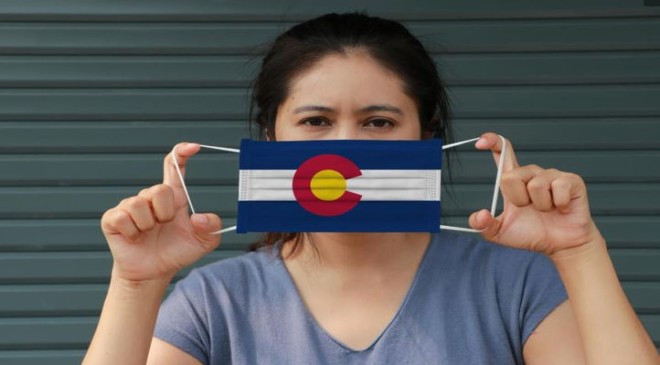DENVER (KDVR) – COVID-19 cases are rising in Colorado. In fact, if you visit Great Sand Dunes National Park, masks are required in all buildings at the park due to increased COVID transmission rates in Alamosa County.
As of Monday, the state’s seven-day positivity rate was 12.1%. The positivity rate measures the amount of COVID positive tests compared to the total amount of tests taken.
State running out of pediatric ICU beds as COVID, RSV, flu spread
There are 17 counties in the state with a high community level over the last week, the Centers for Disease Control and Prevention said.
The CDC said communities with a high community level of COVID-19 should do the following:
- Alamosa County
- Eagle County
- Fremont County
- Garfield County
- Kiowa County
- Logan County
- Mesa County
- Moffat County
- Montezuma County
- Otero County
- Phillips County
- Pitkin County
- Prowers County
- Pueblo County
- Rio Blanco County
- Routt County
- Sedgwick County
- Wear a mask indoors in public
- Stay up to date with COVID-19 vaccines
- Get tested if you have symptoms
- Additional precautions may be needed for people at high risk for severe illness
According to the Colorado Department of Public Health and Environment, incidence rates have risen over the last seven days.

Here’s a look at positivity rates for every county over the last seven days:
- Adams: 12.7%
- Alamosa: 13.8%
- Arapahoe: 11.2%
- Archuleta: 20.7%
- Baca: 15%
- Bent: Fewer than 10 tests in the past week
- Boulder: 12.4%
- Broomfield: 16.5%
- Chaffee: 8.9%
- Cheyenne: 3.6%
- Clear Creek: 18.9%
- Conejos: 12.8%
- Costilla: 12%
- Crowley: 0.0%
- Custer: 10.3%
- Delta: 9.9%
- Denver: 11.2%
- Dolores: Fewer than 10 tests in the past week
- Douglas: 11%
- Eagle: 13.9%
- El Paso: 12.6%
- Elbert: 10.2%
- Fremont: 17.5%
- Garfield: 12.4%
- Gilpin: 7.7%
- Grand: 10.4%
- Gunnison: 6%
- Hinsdale: Fewer than 10 tests in the past week
- Huerfano: 11.1%
- Jackson: Fewer than 10 tests in the past week
- Jefferson: 9.6%
- Kiowa: 60%
- Kit Carson: 10%
- La Plata: 21.7%
- Lake: 18.8%
- Larimer: 13.1%
- Las Animas: 9.6%
- Lincoln: 28.6%
- Logan: 13.1%
- Mesa: 16.6%
- Mineral: Fewer than 10 tests in the past week
- Moffat: 16.3%
- Montezuma: 29.3%
- Montrose: 10.3%
- Morgan: 9.2%
- Otero: 4.8%
- Ouray: 5.9%
- Park: 14.5%
- Phillips: 31.6%
- Pitkin: 18.6%
- Prowers: 9.2%
- Pueblo: 11.2%
- Rio Blanco: 13%
- Rio Grande: 8%
- Routt: 8%
- Saguache: 24%
- San Juan: Fewer than 10 tests in the past week
- San Miguel: 4.1%
- Sedgwick: 27.3%
- Summit: 20.7%
- Teller: 16.4%
- Washington: 14.3%
- Weld: 12.7%
- Yuma: 6.9%
What is the positivity percent?
According to Johns Hopkins Bloomberg School of Public Health, the percent positive is exactly what it sounds like: the percentage of all coronavirus tests performed that are actually positive, or: (positive tests)/(total tests) x 100%. The percent positive (sometimes called the “percent positive rate” or “positivity rate”) helps public health officials answer questions such as:
- What is the current level of SARS-CoV-2 (coronavirus) transmission in the community?
- Are we doing enough testing for the amount of people who are getting infected?
The percent positive will be high if the number of positive tests is too high, or if the number of total tests is too low. A higher percent positive suggests higher transmission and that there are likely more people with coronavirus in the community who haven’t been tested yet, Johns Hopkins shared.









































